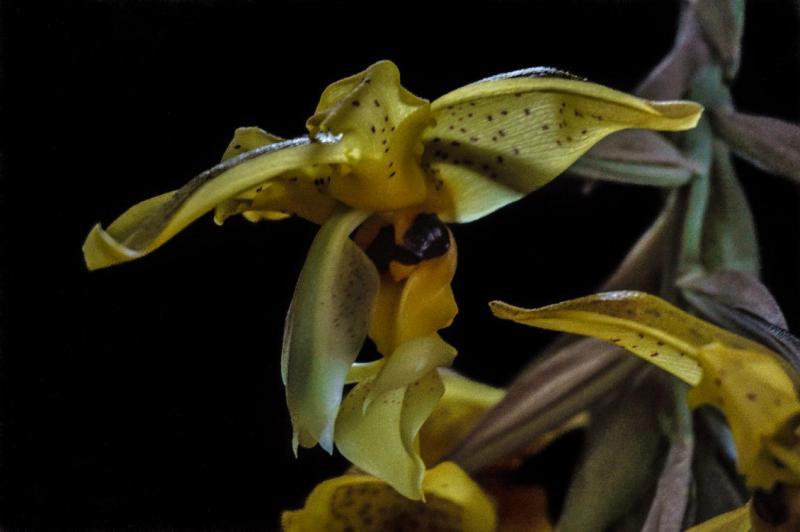Stanhopea wardii
Also known as: Ward's Stanhopea or Stanhopea aurea Stanhopea venusta Stanhopea inodora var. amoena Stanhopea amoena Stanhopea wardii var. aurea in the subfamily: Epidendroideae
Native to: Antioquia - Colombia Departamento de Narino - Colombia Departamento de Zacapa - Guatemala Departamento del Huila - Colombia Departamento del Valle del Cauca - Colombia Honduras Mexico Panama Provincia de Cartago - Costa Rica
General Information
Ward's Stanhopea is a sympodial cool to warm growing epiphytic orchid belonging to the sub family Epidendroideae native to Colombia, Guatemala, Honduras, Mexico, Panama, and Costa Rica. It is named after the English Orchid Enthusiast in the 19th century.
Plant Description
Sympodial. Grows to 36cm. Each new growth has numerous leaves that grow to 8.5-50cm long. Pseudobulbs grow to 3-8cm
Flowers
Numerous fragrant blossoms appear during Summer
Fragrance
The orchid is fragrant. The fragrance can be described as strong
Blooming Season
- Summer
Substrate(s)
- Coarse
- Spaghnum Moss
Care Notes
These orchids like to be kept on the dry side, but may need to be watered daily during warm weather, and prefer a well draining mix or also do well mounted, provided they can be watered regularly.
These are quite a forgiving orchid, there are no special requirements to get this orchid to flower, just good care and consistent conditions. Larger plants may be more fussy and can react poorly to change; a poorly timed repotting, a pest infection or an unusually hot day can set them back for a couple of years. However, even plants that have been treated poorly can thrive, and if they are set back they often recover much stronger then they would otherwise be.
Fragrant:- IsFragrant
Climate
Grows at low to high elevations. Rainfall ranges from 10mm to 480mm per day, heaviest in October and lightest in February. Humidity ranges from 67% to 90%, highest in October and lowest in February. Temperature ranges from 13C to 28C, highest in March (16C to 28C) and lowest in January (13C to 24C).
Watering
Keep moisture levels up during hot weather as the plant is prone to dehydration
Fertiliser
Apply liquid based fertiliser per recommended directions. They can benefit from a high phosphate fertiliser leading up to flowering season, followed by a high nitrogen fertiliser when new growth appears, and a balanced fertiliser in other times. These orchids can also tolerate slow release fertiliser applied 1-2 pellets per cup (250ml) of media.
Use balanced fertiliser during Spring and Summer. Apply fertiliser regularly at half strength year round. Use a high Nitrogen fertiliser during Spring and Summer. Use a high Phosphorous fertiliser during Summer.Potting
Due to the growth nature of these plants they are best mounted onto cork, tree fern slabs, or even trees if the climate suits. Water regularly especially in hot weather.
Use water retentive media such as moss to prevent roots from drying out quickly This plant does very well in baskets or suspended pots This plant does well mounted to Stone slabs. Repotting is best done annually.



















